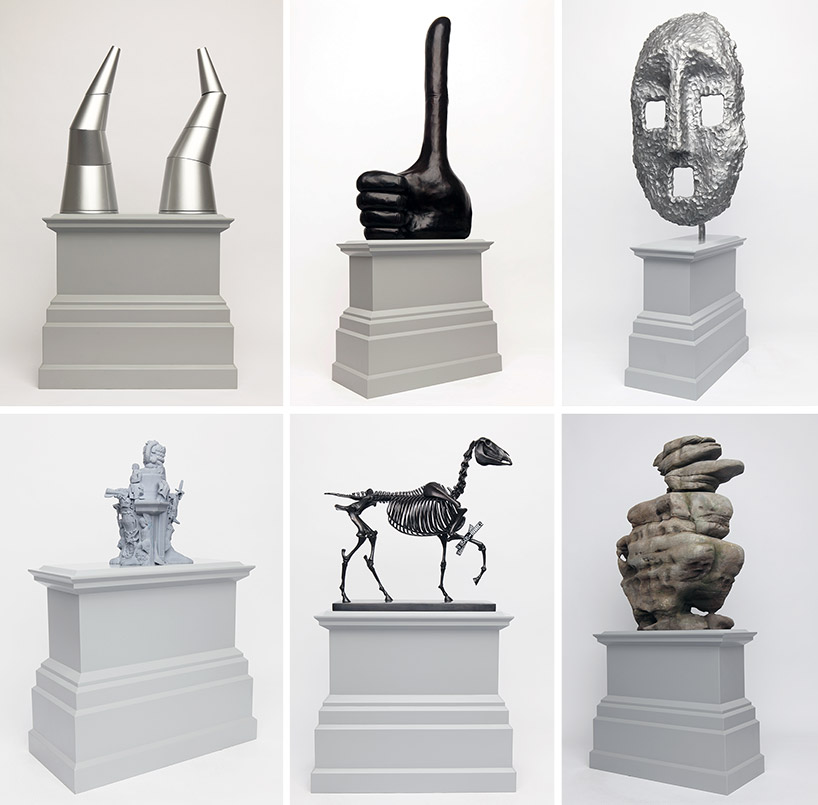The statue standing proudly on the northwest corner of Trafalgar Square is a fifteen and a half foot blue cockerel.

Image from rawstory.com
‘Hahn/Cock’, the creation of German sculptor Katharina Fritsch, won last year’s Fourth Plinth Commission – a competition started in 1998 in a move to fill the 150 year old gap left by an equestrian statue of William III. This statue intended to fill the space was never realised due to insufficient funds. Certainly, such a jarring juxtaposition of a contemporary vision amongst the uniform, traditional aesthetics of the rest of the square’s architecture is provocative, however mayor Boris Johnson, insists that “challenging artwork gets people talking and underpins London as a great world city for culture.”
Since the 25th of September, 6 new shortlisted works have been on display in the crypt of St Martin-in-the-Fields, one of which will replace Fritsch’s sculpture. This interchangeable nature of the space atop the plinth makes a statement about the vibrant change that takes its grip over the city, whilst also questioning some established conventions such as the permanence and preservation of art.

Image from designboom.com
Compared to the vivid ultramarine hue of ‘Hahn/Cock’, this year’s submissions are fairly neutral in colour, however each subject matter is stimulating and inventive. Hans Haacke’s ‘Gift Horse’ cleverly subverts the equestrian tradition by displaying only the skeleton of a horse, devoid of its rider, with a digital ribbon reminiscent of the London Stock Exchange’s ticker, possibly making a comment on the growing financial emphasis of the city over its artistic significance. Mark Leckey’s ‘Larger Squat Afar’, a clever anagram of ‘Trafalgar Square’, is a chaotic amalgamation of all the sculptures which already exist in the area, giving the established historic imagery a digital twist through the use of 3D laser scanning and printing technology. The visual tropes of tribal masks are evoked in a cutting edge way in Ugo Rondinone’s ‘Moon Mask’, combining the ethnic style of Africa through modern means, freeing it somewhat from its cultural origin. Breaking free from the stationary aspect of the sculptures before it, ‘The Dance’ by Liliane Lijn evokes a mechanical sense of movement through the hypnotic rotation of two identical cylindrical spires, which, if chosen, will spin constantly on top of the plinth.

Image from freecondomproject.com
However, my favourite, and the one that ultimately won my vote, was David Shrigley’s ‘Really Good’, an absurdly distorted thumbs-up extending dramatically towards the sky. This gesture calls for positivity, which, in light of the economic crisis and seemingly unending political discord worldwide, is an apt reminder for optimism. Despite this, though, the hysterical and histrionic manner in which the thumb skyrockets makes a satirical remark as well, demonstrating an almost desperate and fraught effort to mask society’s downward spiral.

Image from london.gov.uk
Lastly, the beauty and genius of the fourth plinth Commission lies in its dependence on communal participation, for it is the decision of the public that determines which of these sculptures is to be displayed in the buzzing tourist district of the square. After looking at the proposed works, viewers are encouraged to fill out a voting slip, choosing which of the six best deserves a place on the plinth. Such an emphasis upon the opinion of the community demonstrates the efforts to expand the influence of the arts among modern society, maintaining London’s cultural vibrancy.
